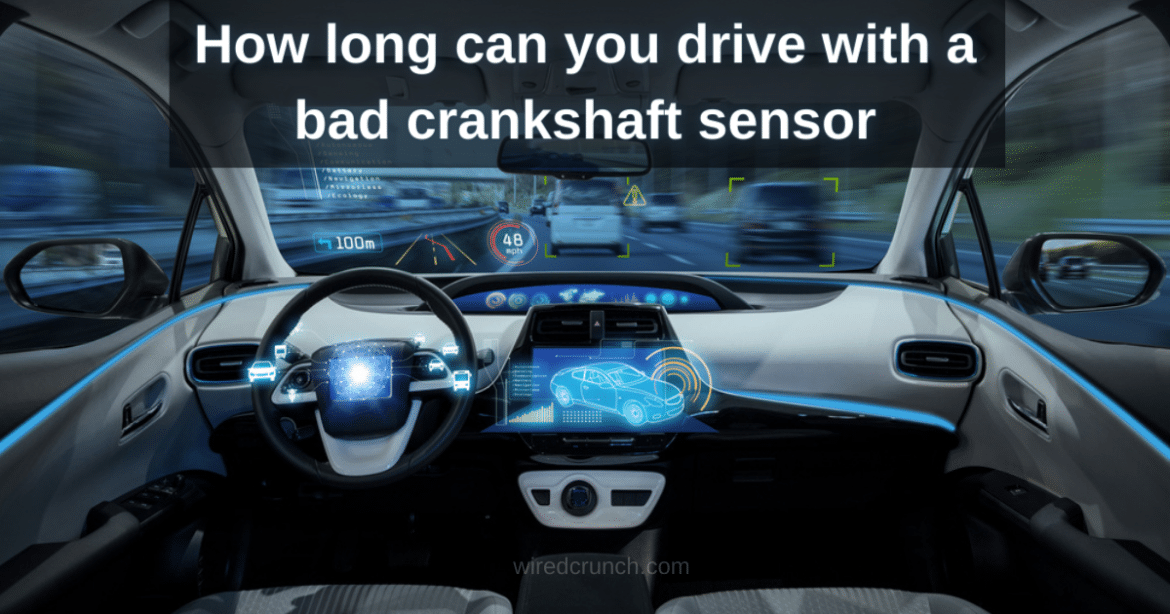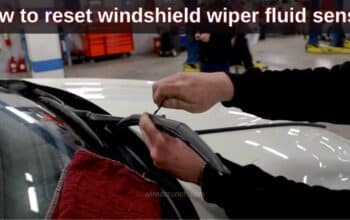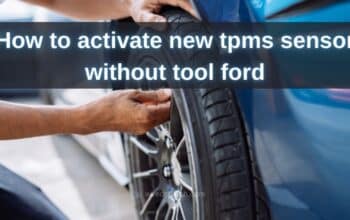Drive with a bad crankshaft sensor is a significant issue that can lead to severe engine problems if not addressed promptly. A malfunctioning crankshaft sensor isn’t just a minor inconvenience; it’s a critical problem that can affect your vehicle’s overall performance and longevity. In this article, we will explore the implications of a faulty crankshaft sensor, provide practical advice on managing this issue, and answer the question: How long can you drive with a bad crankshaft sensor?
From my experience, ignoring a bad crankshaft sensor can quickly escalate into a bigger problem. This sensor plays a crucial role in your car’s engine, ensuring proper timing and ignition. If it fails, the engine may not run smoothly, leading to increased fuel consumption, poor performance, and potential damage to other vital components like the camshaft position sensor. I’ve learned firsthand that while you can still drive by doing basic mechanical repairs or using starting fluid, this is only a temporary fix.
Driving short-term with a malfunctioning crankshaft sensor might be possible, but it’s not advisable in the long run. The inconsistent communication with the ECU can cause mismatched fuel delivery and incorrect ignition timing, resulting in issues like sputtering, stalling, and even complete engine shutdown. It’s crucial to consult a qualified mechanic for a thorough diagnosis and repair to prevent further damage to your vehicle.
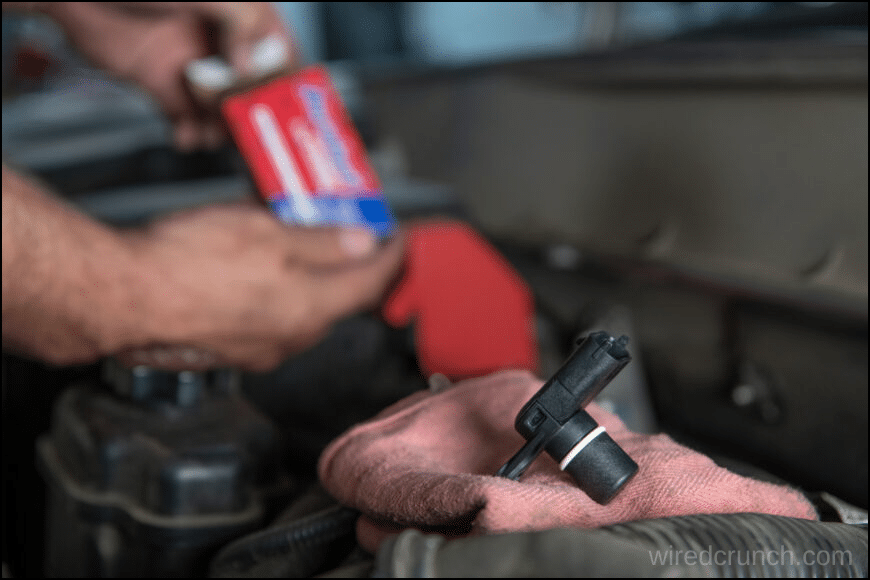
In the following sections, we’ll delve into detailed guidance on what to do if your car’s crankshaft sensor fails, the potential risks of continuing to drive, and expert advice on managing and resolving this issue effectively.
Are you rushing to get to work or heading out on a trip with family or friends? The worst thing that can happen is turning the key, and your car hesitates to start. This can happen for various reasons, but often it’s due to a crankshaft sensor failure. You need to drive the car to a mechanic for a diagnosis. But first, you should know How long can you drive with a bad crankshaft sensor!
Table of Contents
What is a Crankshaft Sensor?
Understanding what a crankshaft is will help you grasp how a crankshaft position sensor (CKP) works. The crankshaft is a shaft where the pistons are mounted, located in the lower part of the engine block. As the pistons move up and down, they rotate the crankshaft, sending power to the transmission. The CKP helps the powertrain control module (PCM) keep track of the crankshaft’s position and rotation, ensuring the ignition and fuel injection are correctly timed.
When the engine isn’t rotating properly, the PCM detects and notes a misfire-related DTC code. The proper operation of the engine relies on the CKP’s function, which precisely times the injection and ignition, depending on the car model.
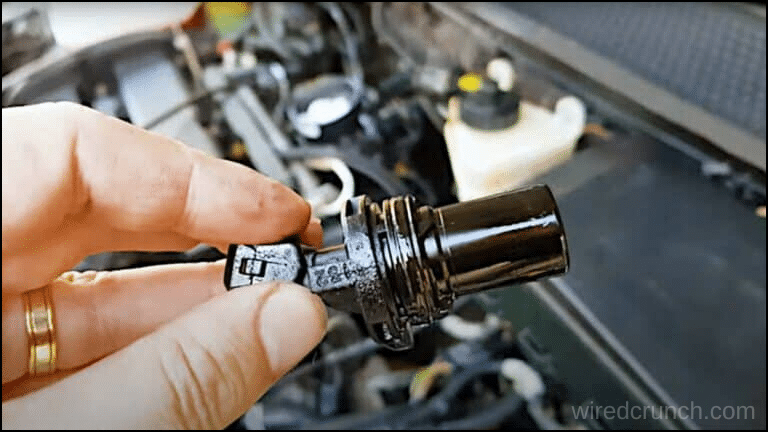
While replacing a bad crankshaft sensor isn’t a complex job, it’s important to know how long you can drive with a bad crankshaft sensor before getting it fixed.
How Does a Crankshaft Sensor Work?
The crankshaft sensor is located close to the engine’s crankshaft and is made of a coil of wire and a magnet. As the engine runs, the crankshaft rotates, producing a tiny electrical current. The speed of the crankshaft affects the strength of this current.
The powertrain control module (PCM) uses this signal to measure the engine’s speed and time the ignition and fuel injection. If you drive with a bad crankshaft sensor, the PCM won’t get accurate information, which can lead to poor engine performance and other issues.
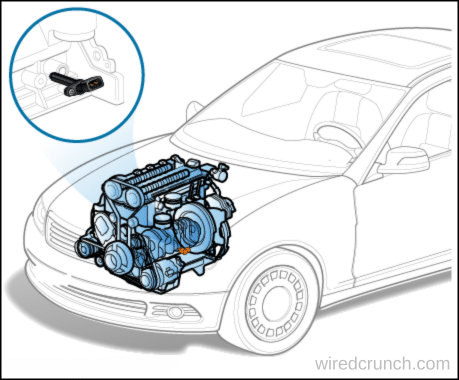
How long can you drive with a bad crankshaft sensor?
How long can NOT be answered. Let’s say you and I have the same vehicle and both bad can shaft sensor (CSS). Mine might if a week and yours a month. When it starts to miss fire or is not running correctly then it can start to do damage. it is safe to drive SHORT TERM BUT not long term it will increase fuel consumption and have poor response and performance from your engine. It won’t communicate with the ECU that good this causing mismatched fuel delivery and ignition timing will be off it will start to sputter, accelerate poorly, stall, and or even shut off and not start again.
Symptoms of a Bad Crankshaft Sensor
These common symptoms indicate that your car has a bad crankshaft sensor.

Engine Vibrations
Do you feel vibrations coming from your car’s engine? When the crankshaft position sensor malfunctions, the PCM can’t control the crankshaft effectively. This can cause your engine to vibrate a lot. You might even feel these vibrations through the steering wheel as you drive.
Check Engine Light Comes On
The crankshaft position sensor constantly communicates with the PCM. If the sensor has a problem, it sends inaccurate information about the crankshaft’s position and speed to the PCM. This causes the check engine light to turn on, indicating initial signs of a faulty crankshaft position sensor. You might see specific engine error codes like P0335 and P0336.
Engine Performance Issues
If the bad crankshaft sensor malfunctions, the PCM won’t know the correct position of the crankshaft or cylinders. This delay affects the PCM’s ability to maintain engine performance. You might notice hesitation every time you press the throttle pedal harder, and sometimes it might not respond at all.
The Car Doesn’t Start
When there are issues with the bad crankshaft sensor, it sends a unique error code to the PCM. This makes it harder to start your car’s engine. If the problem persists, you might not be able to start your engine at all.
Engine Stalling
If your crankshaft position sensor is defective, your engine may stall. Delaying the replacement of this sensor could result in your engine failing to start altogether. In such cases, you may need to have your car towed to a shop for sensor replacement.
Misfiring Cylinder
When a crankshaft position sensor malfunctions, the PCM cannot accurately determine the piston’s position. This often leads to misfires in one or more cylinders. However, if your car shows other symptoms, don’t automatically assume a faulty crankshaft position sensor. Sometimes, a bad spark plug can also cause misfiring.
Starting a car with a bad crankshaft sensor
It’s always ideal to drive your car with a functioning CKP. However, if you need to take your car to a mechanic, follow these steps.
Steps to follow
- First, find the crankshaft position sensor, typically located at the back of the engine near the flywheel or attached to the timing cover. If needed, remove the front passenger side tire to access the sensor.
- Next, unplug the sensor by pressing the connector and pulling it to detach it from the port.
- Next, apply starter fluid to the intake manifold opening. Locate the throttle body under the hood near the air filter box. Remove the throttle body cap and spray a small amount of starter fluid inside. This will assist in igniting the engine, allowing you to drive the car to a mechanic for diagnosis and repair.
Points to Remember
So, if you’ve followed all these steps and the car hesitates when starting with enough fuel, the issue may be with the spark plug. You can resolve this by replacing the spark plug yourself or taking the car to an auto store for assistance.
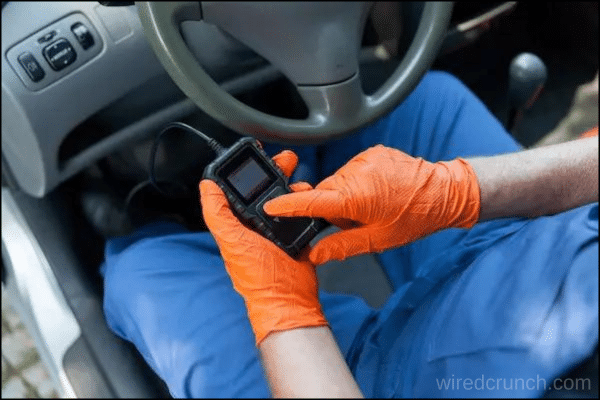
How to Replace the Crankshaft Sensor
Replacing a crankshaft sensor isn’t too complicated, but it does require some basic tools and a code reader to do the job correctly.
- Remove the negative battery cable to avoid any electrical shorts while working on the car.
- Locate the crankshaft sensor next to the engine’s harmonic balancer or timing cover.
- Unplug the sensor’s electrical connector and remove the mounting bolts to pull the sensor out of its mount.
- Clean the area around the sensor mount to ensure a solid seal for the replacement sensor.
- Secure the new sensor in its position and tighten the bolts to hold it in place.
- Reattach the electrical connector to the sensor.
- Start the car to test the new sensor. If the engine starts immediately, you’ve successfully installed the new crankshaft sensor.
- If the car still doesn’t start, there may be another issue that needs repair. Consult a skilled mechanic for further diagnostics and repairs.
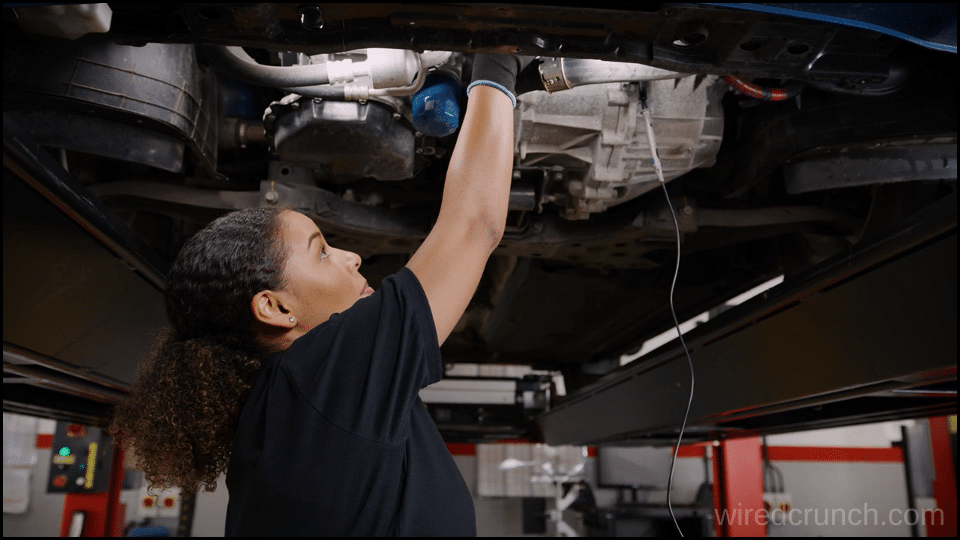
How Long Does a Crankshaft Sensor Last
Ideally, a crankshaft sensor should last the lifetime of your car. However, like any other component, it undergoes wear and tear and will eventually fail. Crankshaft sensors can fail for various reasons, such as the following.
- Wiring problems
- Physical damage
- Contamination
- Excessive vibration
If you suspect the crankshaft sensor is failing, have it checked by a dealership or a skilled mechanic as soon as possible.
Conclusion
Drive with a bad crankshaft sensor can lead to serious engine problems and should be addressed promptly. If you notice any symptoms of a failing sensor, such as engine vibrations, misfires, or difficulty starting, it’s crucial to get it checked and repaired by a professional mechanic. While you might be able to drive with a bad crankshaft sensor for a short period, doing so can cause further damage to your vehicle. Always prioritize timely repairs to ensure your car runs smoothly and efficiently.
Frequently Asked Questions (FAQs)
What happens if you don’t replace a crankshaft sensor?
These sensors are commonly found in nearly all engines equipped with distributorless ignition systems. If the crank sensor fails, the computer won’t know how to set the ignition timing, so the engine may stop running or refuse to start.
Can you still have a spark with a bad crank sensor?
If the CKP sensor fails, the PCM won’t be able to determine the correct timing for firing the spark plugs and operating the fuel injectors. Because of this malfunction, the engine may become starved of fuel or may lack the spark it needs to run.
What happens if you keep driving with a bad crankshaft sensor?
The sensor’s function in controlling ignition timing and fuel injection is vital. When these processes are disrupted, it can cause inefficient combustion and place stress on different engine components, leading to poor performance. A car with a bad sensor might experience rough idling, prolonged cranking, or may not start at all.
Will disconnecting the battery reset the crankshaft sensor?
It varies between vehicles, but disconnecting the car battery from your vehicle often won’t reset the crankshaft position sensor. Crank learning information helps the PCM detect misfires, so the crankshaft position sensor must relearn your vehicle’s snapshot.
Can a bad crankshaft sensor cause a car to shut off?
Sometimes while driving, an engine may stall for various reasons. A common cause is a faulty CKP sensor or wiring. If either component is having issues and is noticed by the system while the vehicle is in motion, the cut-off of the signal will likely cause the engine to stall and stop running.
READ MORE :
Fuel Rail Pressure Sensor Diagram Explained
I have a professional background with a Diploma in Information Communication Technology, which brings a blend of technical expertise and creative flair to my writing. Currently, I serve as a writer for Creativeoutrank LLC and contribute to their various websites.
I’m writing is a ref... Read more
